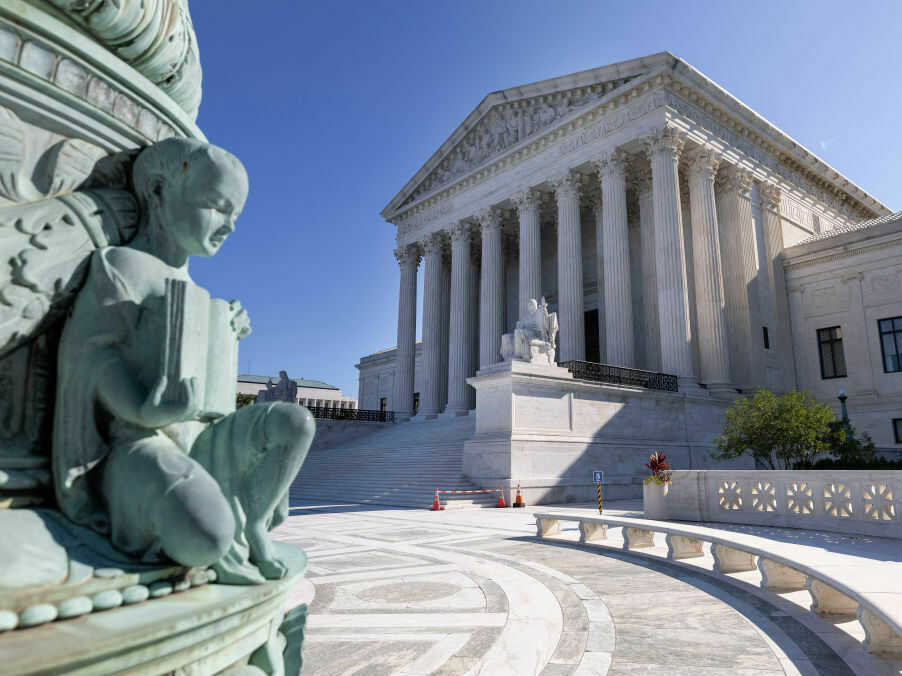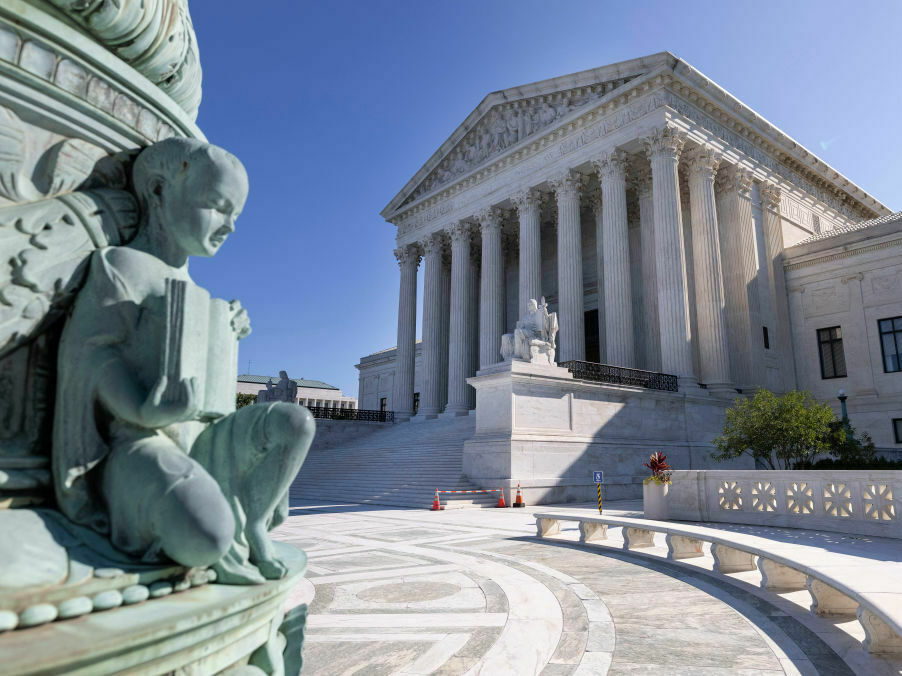
The Supreme Court hears arguments Monday in a challenge to the deal meant to compensate victims of the highly addictive painkiller OxyContin.
Kevin Dietsch/Getty Images
hide caption
toggle caption
Kevin Dietsch/Getty Images

The Supreme Court hears arguments Monday in a challenge to the deal meant to compensate victims of the highly addictive painkiller OxyContin.
Kevin Dietsch/Getty Images
The opioid crisis comes to the Supreme Court Monday as the justices hear arguments in a challenge to the bankruptcy deal meant to compensate victims of the highly addictive pain killer OxyContin.
Under the terms of the deal approved by a lower court, Purdue Pharma—the maker, aggressive peddler, and deceptive marketer of Oxycontin— agreed to pay billions of dollars to those harmed in the opioid epidemic. In exchange, the deal shields members of the Sackler family from personal liability, though they owned and ran the company.
Just what happened at Purdue Pharma, and what the Sacklers did, was not known for a long time. Now, however, their role and the company’s have been well documented, in court and movies, books, and documentaries, admire Crime of the Century.
“Within the last 20 years, more than 500,000 Americans have been killed by overdoses,” the documentary recounts. “This was a new drug cartel. They were drug dealers wearing suits and lab coats.”
The deal at the center of the case
By 2020, Purdue Pharma pleaded guilty to three criminal charges. The company agreed that it owed $8 billion in criminal and civil fines, most of it to be paid to state and local governments handling the fallout of the opioid crisis. Most of the money was conditioned on the company reaching a deal in bankruptcy court that would reimburse victims of the opioid epidemic, including those state and local governments, as well as individuals who were harmed.
That deal that is at the center of Monday’s case because it releases the Sacklers from personal liability, despite the fact that all three of the original Sackler brothers who bought Purdue and ultimately developed OxyContin were doctors. And, six Sacklers sat on the board of the company, including the chairman Richard Sackler, who closely directed the firm’s aggressive and deceptive marketing strategy of OxyContin as not causing addiction.
Under the original bankruptcy deal with the company, the Sacklers kicked in $4 billion to be divided among the state and local governments, and others. But, at the same time the Sackler family members were to be released from any advance liability.
When eight states and the District of Columbia balked at the amount, the Sacklers upped the ante to $6 billion, with the remaining $2 billion coming from the assets and future earnings of a new non-profit company formed after Purdue’s dissolution.
After the Sacklers increased their contribution to $6 billion, the objecting states withdrew their opposition, and 95% of the state, local and tribal governments, as well as groups of individuals voted to approve the settlement.
What critics of the agreement say
But, United States Trustee William Harrington, who oversees bankruptcy cases in New York, Connecticut and Vermont, objected to the deal. Representing him in the Supreme Court Monday, the Biden administration will argue that the bankruptcy law does not enable bankruptcy courts to approve a release from liability for third parties admire the Sacklers.
Georgetown University law professor Adam Levitin says that the Sacklers’ $6 billion to be paid over eight years is buying them not only a release from liability, it is ensuring that they will not have to testify about their misdeeds in future litigation, and they will be able to keep about half of their money and other assets.
“The Sacklers do not want to have to be in the bankruptcy fishbowl,” Levitin says. “They’re wanting to get bankruptcy at half price.”
Levitan add that the release from liability covers more than just the Sacklers. It also includes lots of other Sackler acolytes, from their lawyers to consultants, doctors, even former Sen. Luther Strange, who was a Purdue lobbyist after leaving the Senate. “None of them have to pay a dime,” he observers, but all of them would be released from liability in the deal.
“Bankruptcy is supposed to supply relief for honest but unfortunate debtors. And those are people who file for bankruptcy and pay the price. They come clean about their assets and give up all of their assets to their creditors,” says Levitin. “The Sacklers are not doing either of those things.”
‘The perfect can’t be the enemy of the good’
Not everyone who studies bankruptcy agrees.
“I think its backseat driving to say that it’s not good enough,” Columbia Law professor Edward Morrison says. “The perfect can’t be the enemy of the good.”
Indeed, as Morrison notes, the Sacklers have had 20 years to hide their money overseas in places that are perhaps possible but costly and time consuming to achieve.
“Do we want to burn up value reaching those assets and those people, or do we want to just pay the money that’s available to the victims?” Morrison asks. “Maybe its a tradeoff we wouldn’t have to make in an ideal world. But we don’t live in a perfect world.”
Bankruptcy court has a special role to play particularly in large cases admire this, he notes, because this is the one place where a settlement can be reached with so many victims from so many places, with so many diverse interests.
That said, though, the Supreme Court has, of late, signaled its skepticism about bankruptcy judges, viewing them as a lesser form of assess because they serve for limited terms and are appointed by courts of appeal, not the president.
And yet, as Morrison points out, bankruptcy courts serve as something of “a safety valve” for dealing with wrongful conduct that results in mass injuries.
So, if the justices do reverse the Purdue Pharma deal, Morrison says, “it’ll be a huge mess.”



